IS THE HUMAN BODY A MATERIAL OBJECT OR A SPIRITUAL BEING? – Lecture by Jon Clarkson
Posted: October 13, 2014 Filed under: SUBJECT, Subject - Contextualisation | Tags: Anthony McCall, art, art student, artist, body, Caravaggio, fineart, John Coplan, jon clarkson, lecture, Lecture Notes, light, material, spiritual Leave a commentJon Clarkson delivers his lectures through questions and both him and the participating students work together to answer them. This is an effective way of teaching as it encourages you to think about the piece of artwork for yourself. Caravaggio’s work and the work of John Coplans and Anthony Mcall is being used as a visual resource to help us ask the question: Is the Human body a material object or a spiritual being?
Caravaggio – John the Baptist, 1602
How old is the subject in the painting by Caravaggio? In this painting, the face portrays a different sort of age to the body. At one level he is prepubescent, there is no hair on the body in adult areas like the chest or intimate region. However, the arm of the body is manly, strong and muscular so there are contradicting signs of ages combined into one body in this piece.
Is it shocking to see him portrayed this way? There is something quite shocking about this piece. It has a kind of erotic content. This is evident in the position that he is laying in. It is also evident in the intimate relationship that seems to be going on between him and the sheep, it is nothing the relationship that a typical shepherd would have with a sheep. There are also silks and furs around the sensitive area.
Do you think that this is a voyeuristic image? We are invited to think about how the body touched the world and how the world touches the body. Voyeuristic is the idea of peeping through a keyhole. This image is not voyeuristic. It is like the subject is posing for the viewer and is aware of the observer. We were asked to think about whether the eroticism of the image undermines its religious purpose and to me it does, but to other students in the room, they felt that the religious element over shone the eroticism.
Caravaggio – The Calling of St.Matthew
Is the light real/realistic? Light is the primary subject but it is not really very realistic. There are many different directions of light. It has been said that he “He painted in a cellar with a single light”.
Is it inside or outside? It is thought that this painting is supposed to be outside in an alleyway in the early evening. There are two different eras going on in the image and the light in the work is both spiritual and material.
The hand of Jesus that can be seen within this work has been used before. It has been copied/appropriated from a Michelangelo piece on the ceiling of the Sistine Chapel 1508-12. Jesus looks tired and the hand is doubled in the painting by peter’s hand. Is it just a clever reference or does it affect the way we understand the painting. There are not enough legs on the table in this piece and is there enough room for everyone? The space available has been compressed.
Caravaggio – Conversation of St.Paul 1601
Who see’s what? The Horse sees Paul. The man sees the horse. Paul see’s Jesus but we as the observer don’t.
This image is supposed to be set at mid day so what is the light? Spiritual light/enlightenment. There are contradictory special markers within the piece.
This piece can be paired with Caravaggio’s piece – Crucifixion of St. Peter 1601. There are two great bottoms prominent in the picture, the bum of the horse and the bum of a man.
This painting seems to be of the point where St. Peter realises that he is being crucified. His face seems to convey shock and surprise, it is now becoming real.
How are the executioners depicted? Peter is the only real character here. There are no visible faces on the other people in the painting. They are 17th Century peasants and they don’t fit in. Making something contemporary in order to make it real.
John Coplans – Hands Holding Feet 1985
Within this piece, The sense of the body as a whole has completely disappeared. There is a focus on light and it looks like the legs are missing. Feet can still give offence.
John Coplans – Self Portrait, Interlocking Fingers 2000
With John Coplans work you never get the whole picture, but with Caravaggio you do. Is this piece erotic in anyway? Is it possible to compare it with Caravaggio’s depiction of the human body.
Unfortunately Jon Clarkson ran out of time to finish this lecture, which is such a shame because his analysis of these works in relation to light and the body was incredibly interesting. He ended the lecture by making us aware of the work of Anthony McCall.
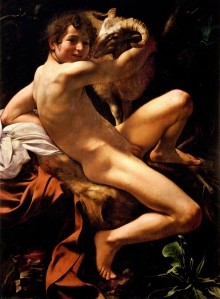
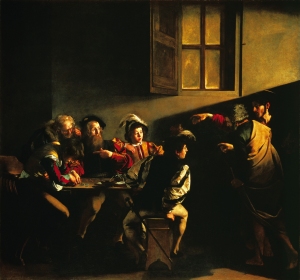
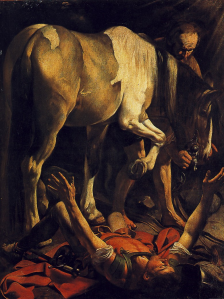

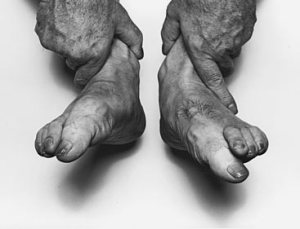
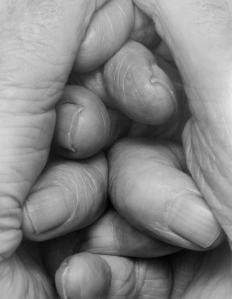
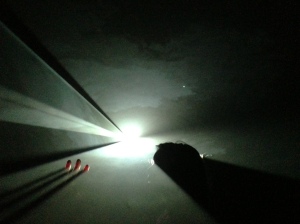
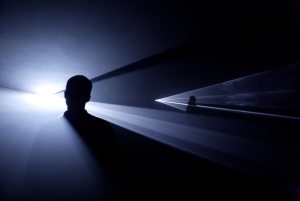

Recent Comments